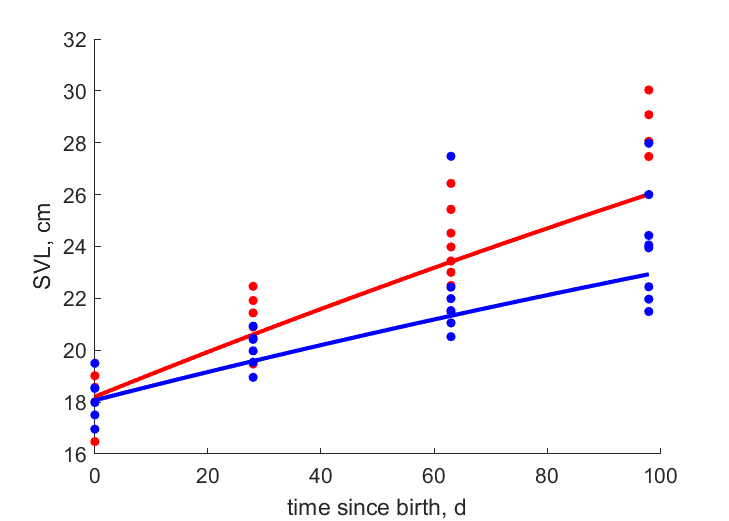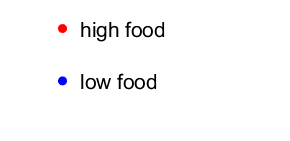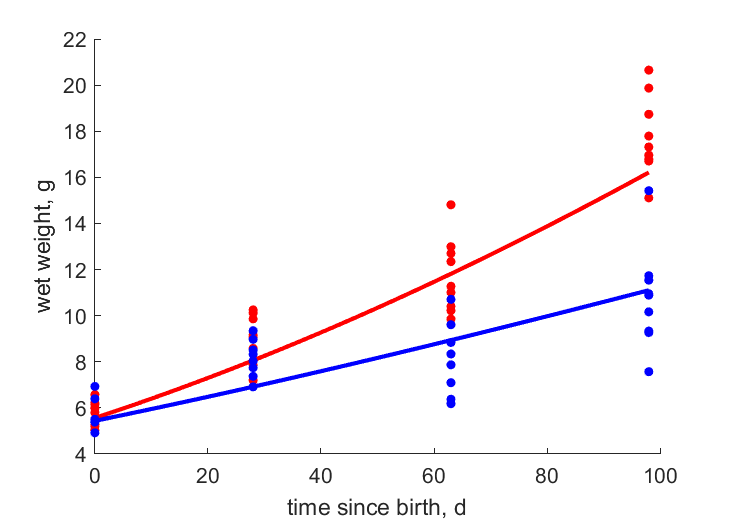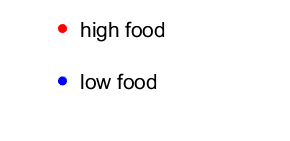Predictions & Data for this entry
| Model: std | climate: Cfb, Dfb, BWk, BSk | migrate: | phylum: |
| COMPLETE = 2.7 | ecozone: THp | food: biCv, biCi | class: |
| MRE = 0.073 | habitat: 0iThh, 0iTg | gender: Dg | order: |
| SMSE = 0.010 | embryo: Tv | reprod: O | family: |
Zero-variate data
| Data | Observed | Predicted | (RE) | Unit | Description | Reference |
|---|---|---|---|---|---|---|
| ap | 1278 | 1257 | (0.0163) | d | age at puberty | arkive |
| am | 7300 | 7300 | (1.799e-05) | d | life span | StumStri2006 |
| Lb | 17 | 19.48 | (0.1458) | cm | total length at hatching | From1969 |
| Li | 70 | 63.93 | (0.08675) | cm | ultimate total length | StumStri2006 |
| Wwi | 180 | 196.4 | (0.09129) | g | ultimate wet weight | Wiki |
| Ri | 0.0274 | 0.02659 | (0.02963) | #/d | maximum reprod rate | EngeFrit1993 |
Uni- and bivariate data
| Data | Figure | Independent variable | Dependent variable | (RE) | Reference |
|---|---|---|---|---|---|
| tL1 |   | time since birth | SVL | (0.05061) | ForsLind1996 |
| tL0 |   | time since birth | SVL | (0.05276) | ForsLind1996 |
| tW1 |   | time since birth | wet weight | (0.1105) | ForsLind1996 |
| tW0 |   | time since birth | wet weight | (0.1462) | ForsLind1996 |
| tL |  | time since birth | total length | (0.07461) | From1969 |
Pseudo-data at Tref = 20°C
| Data | Generalised animal | Vipera berus | Unit | Description |
|---|---|---|---|---|
| v | 0.02 | 0.02759 | cm/d | energy conductance |
| kap | 0.8 | 0.5129 | - | allocation fraction to soma |
| kap_R | 0.95 | 0.95 | - | reproduction efficiency |
| p_M | 18 | 44.57 | J/d.cm^3 | vol-spec som maint |
| k_J | 0.002 | 0.002 | 1/d | maturity maint rate coefficient |
| kap_G | 0.8 | 0.8017 | - | growth efficiency |
Facts
- Ovoviviparous (Ref: From1969)
- Males smaller than females, especially in weight (Ref: From1969)
Bibliography